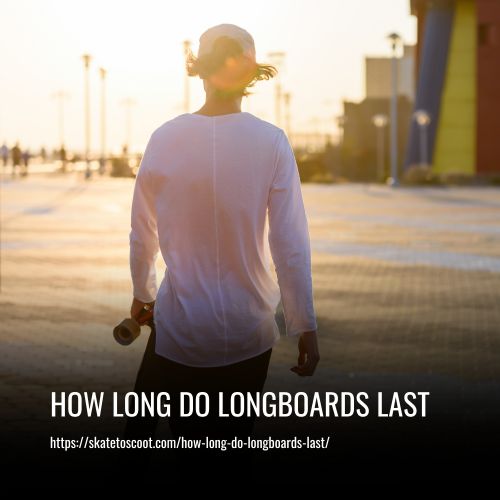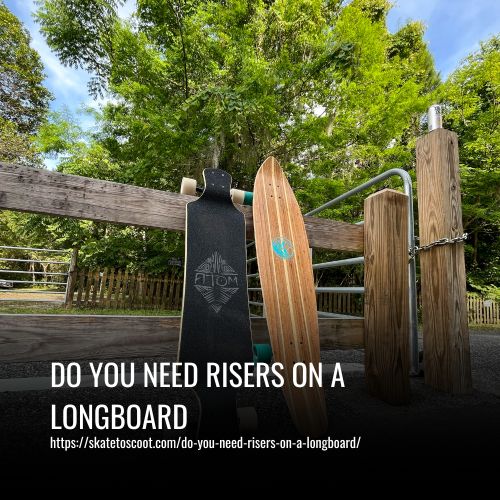As an Amazon Associate we earn from qualifying purchases.
Delving into the realm of longboarding, the debate surrounding flexibility in these boards sparks intrigue and curiosity. Through my firsthand encounters and personal forays into the world of longboarding, I aim to unravel the question: Should a longboard be flexible?
As I navigate through the nuances and experiences with various board flexibilities, I invite you to join this exploration into the role flexibility plays in enhancing or altering the longboarding experience.
Whether carving down slopes or cruising through the streets, understanding the significance of board flexibility is paramount to finding the perfect ride that aligns with your unique style and preferences.

What is longboard flex?
Longboard flex refers to the amount of bending or deformation a longboard deck undergoes when weight is applied to it. The level of flex in a longboard is determined by various factors including deck construction, deck length, rider weight, and riding style.
Deck construction plays a significant role in determining the flex of a longboard. Decks made from pure hardwood maple tend to be stiffer, as the material does not deform much under stress. On the other hand, decks made from a combination of maple and bamboo result in a more controlled and flexier ride. Some advanced decks even use composite construction with bamboo cores and layers of fiberglass, epoxy resin, and bamboo veneers, resulting in a lighter, stronger, and more responsive deck.
Deck length also affects the flex of a longboard. Longer decks tend to have more flex compared to shorter ones because of their increased surface area. Rider weight is another factor that influences the flex of a longboard. Heavier riders will typically experience less flex compared to lighter riders.
Kinds of Longboard Flex: Understanding Soft, Medium, and Stiff Flex
When it comes to choosing a longboard, understanding the different types of flex is crucial in finding the board that matches your riding style and preferences. Longboard decks can have a soft flex, medium flex, or stiff flex, and each of these flex levels translates to a different riding experience. Let’s dive into the characteristics and benefits of each type of flex:
- Soft Flex: A longboard with a soft flex is perfect for cruising and freestyle riders. It offers excellent shock absorption, making it ideal for riding on sidewalks and uneven surfaces. With a soft flex deck, you won’t feel the cracks or small pebbles as much compared to stiffer decks. This type of flex is also beneficial for freestyle riders, as it provides good impact resistance when performing tricks and jumping off curbs and staircases. However, extremely flexy boards may make turning and carving more challenging.
- Medium Flex: A medium flex board strikes a balance between stability and performance. It suits freestyle riders, particularly those who focus on technical tricks. Medium flex decks offer optimal speed and control, allowing riders to cruise comfortably and land various park and street tricks. If you’re a lighter rider or a beginner in freestyle, choosing a medium-flex board provides the stability needed for learning and landing tricks.
- Stiff Flex: Stiff flex is the go-to choice for riders seeking speed and stability. It’s suitable for free riders who enjoy bombing hills and executing powerslides. The stiffness of the deck ensures control and reduces the risk of wheel bite or the deck arcing too low during high-speed slides and carving. For downhill longboarding, where riders reach incredibly fast speeds, a stiff deck is essential for stability, weight support, and minimizing speed wobbles. Canadian maple, known for its strength, is a popular material for making stiff decks.
Finding The Right Softness For Your Ride
When choosing a longboard, it’s important to consider the flex of the deck, as it greatly impacts your riding experience. The softness or stiffness of the board determines how it reacts to your movements and the terrain. Let’s explore how to find the right softness for your ride.
For freestyle riding, a little bit of soft to medium board flex is recommended. This allows for good shock absorption, making jumps and tricks more comfortable. However, it’s important to strike a balance, as a super soft board may make turns and tricks more challenging to perform.
For free riding, where speed and stability are key, a medium to stiff board flex is recommended. These boards offer higher stability, especially at moderate speeds, and are better suited for riders looking to cruise and carve at faster speeds.
By understanding the impact of flex and considering the type of riding you’ll be doing, you can choose a longboard with the right softness that complements your riding style and preferences.
Stiff vs flexy board pros and cons
When choosing a longboard, one of the key decisions you’ll need to make is whether to go for a stiffer or flexier board. Each option has its pros and cons, and the right choice depends on your riding style and preferences.
Stiff boards offer superior stability, making them ideal for downhill riding. They are less prone to wobbling, providing advanced riders with full control even at high speeds. Stiffer boards also excel in technical riding and freeriding, where speed and responsiveness are crucial. However, they may not be as forgiving on rough terrains and can result in a slightly less comfortable ride.
| PROS | CONS | |
| Stiff deck | More stable for beginners. More stable at speed. Easier to pop and control for freestyle tricks. Good for heavier riders. | More vibrations on rough pavement. Not as easy to carve and pump. |
| Flexy deck | Lively feel, springy. Absorbs shocks better. Fun to carve. Easy to pump. | More wobbly at speed. Not great for street tricks. |
On the other hand, flexier boards bring a different set of advantages. Their softness allows for better shock absorption, enhancing the overall comfort of your ride. These boards are perfect for freestyle riders, as they provide a more forgiving platform for jumps and tricks. Flexier boards are also preferred by lighter and beginner riders, as they offer a smoother feel and are easier to maneuver.
Flex for urban commuting
When it comes to choosing a longboard for urban commuting, the level of flexibility you should look for depends on the type of terrain you’ll be riding on. If your commute involves navigating through small streets and alleys with lots of cracks and bumps in the pavement, a board with some flex can be beneficial. The flex in the board helps to absorb the ground imperfections, providing a smoother and more comfortable ride. This can prevent you from feeling every small jolt and impact as you travel.
However, if your commute requires frequent popping or ollieing to navigate sidewalks and curbs, a stiffer deck with good pop would be more suitable. A stiffer deck, such as the Loaded Ballona, offers better responsiveness and allows for more efficient pop or ollie action. This is particularly important when you need to maneuver over obstacles in an urban setting.
For those who often encounter hills during their commute, it’s important to note that a flexy deck may bottom out and touch the ground. In such cases, a stiffer deck would be more suitable as it provides better stability and prevents the board from hitting the ground while going up or down hills.
Flex For Distance Pushing
When it comes to distance pushing on a longboard, the flex of the board plays a crucial role in determining the quality of your ride. For those planning to embark on long commutes or fitness rides on roads or bike paths, a stiffer board is highly recommended. A stiffer board offers enhanced stability and support, particularly at higher speeds.
However, experienced riders might opt for a flexy board for pushing on flat surfaces. The flex of the board can provide an energetic return, resulting in increased speed. It is important to note, though, that choosing a flexy board may sacrifice some stability.
In addition to the benefits of a flex board for speed, a certain level of deck flex also provides improved vibration dampening. This can make riding on rough surfaces significantly more comfortable, allowing for longer and more enjoyable sessions.
Flex For Carving & Pumping
When it comes to carving and pumping on a longboard, having a flexible board can provide you with great momentum and speed. This type of riding technique allows you to gain energy and speed from your carves and the motion of compressing and offloading.
A flexy deck is particularly beneficial for carving and pump track riding. It adds speed and control to your rides, especially once you have mastered the technique. The Icarus is an excellent example of a flexible board that is perfect for carving and pumping.
It is important to note that the amount of flex you prefer will depend on how hard you carve and how much you weigh. If you are a heavier rider and carve very aggressively, a super-flexy deck might bottom out and cause wheel bite. In this case, it would be more suitable to opt for a slightly stiffer deck for better performance and stability.
Flex For Dancing & Freestyle
Flex is an important factor to consider when choosing a longboard for dancing and freestyle riding. For dancing, a slight flex in the board can make your ride more enjoyable and easier to maintain while you move around the deck. The flex allows for smoother carves and turns, enhancing the flow of your dance movements. Additionally, the softness provided by the flex contributes to softer landings when performing jumps and tricks.
In contrast, riders who like to combine freestyle tricks with dancing often prefer a stiffer board. A stiffer board provides more pop, allowing for better responsiveness during ollies and kickflips. It offers a more predictable performance when popped in the air, which is crucial for executing tricks with precision.
It is worth noting that finding the right amount of flex depends on your personal preference and riding style. Too much flex can hinder balance and stability when performing dance tricks, while too little flex can result in a rigid and less forgiving ride. Experimenting with different flex variations will help you determine the perfect board for your dancing and freestyle needs.
Flex For Freeride & Downhill
When it comes to freeride and downhill riding, a stiffer deck is generally the best choice. The rigidity of a stiffer board provides more stability at higher speeds, reducing the likelihood of getting wobbles. This is crucial for maintaining control and confidence while navigating steep hills or executing slides.
A stiffer deck also offers more support and responsiveness when sliding or drifting. The solid and damp characteristics of a stiffer board enhance your ability to initiate and control slides, allowing for smooth and controlled maneuvers.
On the other hand, if you are still learning to slide or prefer a more secure feel, a slightly flexed board may be suitable. These boards, like the 34″ Chinchilla or the 39″ Tan Tien, provide a bit more flex while still maintaining a longer and lower-riding design. This combination allows for easier initiation of slides while providing enough stability for carving down moderate hills.
Longboard Flex For Heavier Riders
For heavier riders, it is generally recommended to opt for a stiffer longboard deck, especially for carving and light freeride. While there may be concern that a thin and flexy deck might snap under the weight and intensity of riding, high-quality decks from reputable brands like Loaded, Landyachtz, Arbor, and Sector 9 are very strong, particularly those made with hybrid bamboo/maple or bamboo/fiberglass materials.
These decks can withstand months of riding without showing signs of stress. Additionally, the flex of a longboard deck reduces the likelihood of it snapping. Similar to the suspension of a car, flex absorbs hard impacts that would otherwise put too much strain on a stiffer deck. However, it’s important to note that a flexure deck may have clearance issues, causing it to potentially touch the ground or the wheels even with wheel wells or flares.
When ridden by a heavy rider, a deck might flex 4 to 5 inches and hit the ground when jumping in the middle, even with large wheels and thick 1/2-inch risers. To prevent this, a wider stance (feet further apart) can be adopted when going over bumps. Many heavier riders find that a maple deck provides just enough flex for their needs. Ultimately, finding the right amount of flex for a heavier rider may require some experimentation and personal preference based on deck characteristics.
Should A Pintail Longboard Be Stiff Or Flexible?
A pintail longboard should have some amount of flex to offer a nice ride when cruising along the boardwalk. The narrow tapered shape, wheelbase, and RKP trucks of pintail longboards make them very responsive and tight-turning. This responsiveness and energetic carving are enhanced by the flex of the board.
Flexier pintail longboards, especially those on the longer side (e.g. 40 – 44″), provide an even more lively and responsive ride. Bamboo pintails generally offer more flex compared to full maple models, but some maple boards like the 41″ Landyachtz Condor still provide a decent amount of flex.
Flex is important for pintail longboards as it allows for better maneuverability and pumping. It absorbs hard impacts, resulting in a smoother and more comfortable ride. A slight amount of flex also adds some springiness and energy to the board, enhancing the overall experience.
FAQs
Longboard flex refers to how much a longboard deck bends when weight is applied to it. Some decks are stiff and don’t bend much, while others have a moderate or significant amount of flex. The amount of flex can vary depending on factors such as the number of plays in the deck and the weight of the rider.
The amount of flex your longboard needs depends on your personal preference and the type of riding you do. Riders who primarily engage in downhill or freeride styles typically prefer a stiffer deck with less flex. In contrast, those who focus on freestyle tricks or cruising may prefer a board with more flex for a playful and enjoyable ride.
The goodness or badness of flex on a longboard depends on the particular style of riding. Excessive flex on a downhill board can reduce stability and make control more difficult. On the other hand, a lack of flex on a freestyle board can limit maneuverability and hinder trick performance. It’s worth considering a rider’s weight and skill level as well since too much flex can negatively impact stability, especially for heavier or beginner riders.
The amount of flex in a longboard should be determined by the skater’s preferred style of riding. For those interested in freestyle or casual cruising, a board with more flex can provide a fun and lively experience. However, keep in mind that softer flex equates to a less stable ride. On the other hand, riders seeking stability may prefer a stiffer board, which offers a more controlled experience. Ultimately, it’s up to each skater to determine their desired amount of flex based on their individual style and comfort.
A dance longboard benefits from having good flex. However, it’s important to strike a balance so that the deck is responsive without being overly sensitive to errors. Additionally, ideal dancer decks often have a slight “rocker” shape, with the middle of the deck being the lowest point of the lengthwise curvature. Some dancer decks may also have the standing platform situated lower than the mount points to enhance rider comfort during dance moves.
Conclusion:
The flexibility of a longboard ultimately comes down to personal preference and riding style. Whether you prefer the maneuverability of a flexible board or the stability of a rigid one, the most important thing is to find a board that suits your needs and allows you to enjoy the ride.
So, whether you’re a beginner looking for a forgiving board or an experienced rider seeking more control, remember to choose what feels right for you and keep on shredding!
Amazon and the Amazon logo are trademarks of Amazon.com, Inc, or its affiliates.


